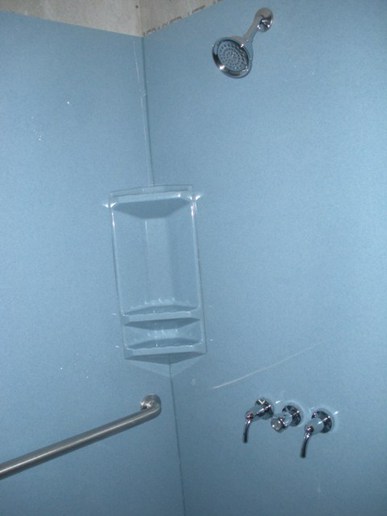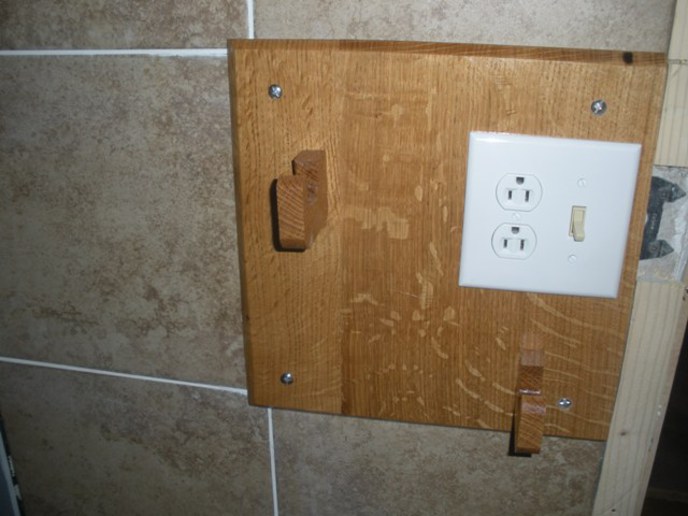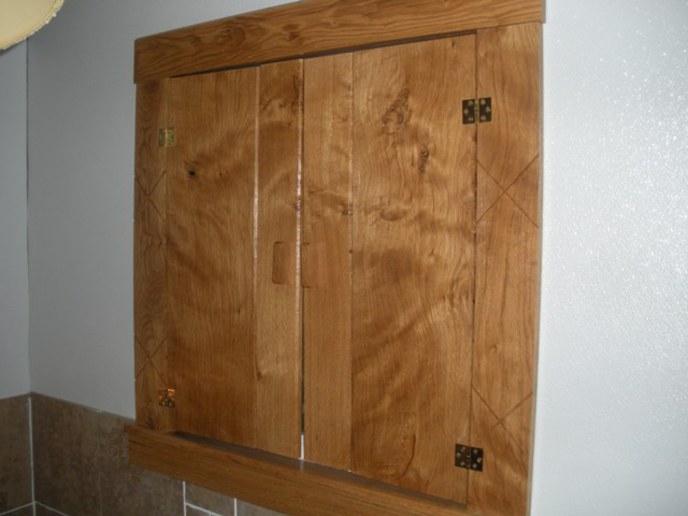Roger - Kansas
Member
Progress is slow on this. Still haven't started on the waterfall in the shower. Seems there is always one more thing to do that is more important. Several years ago a life long friend of my father gave him several Oak trees out of the river bottom. We cut them up on the sawmill, stacked and air dried the lumber. I am using it to trim the bathroom. It is hard as a rock and has tried every tool I own. Not sure what causes the markings on the boards that I used for the electric outlet. The last picture is the window, I used Oak shutters instead of curtains. I have spent more for saw blades, sharpening planer and jointer blades than I would have for store bought trim. But that's not me. I am really enjoying this project.







